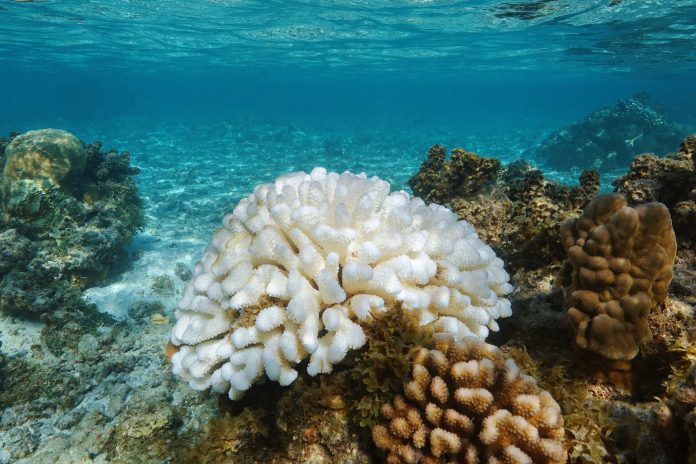As ocean temperatures reach record highs, coral reefs face the likelihood of more mass bleaching events. But what does this mean?
Satellite data from the European Copernicus climate change service revealed that the global average sea surface temperature in February reached 21.06 degrees Celsius, surpassing the previous record set last August.
European Copernicus climate change service
The maps released by the company revealed areas of warmer than usual waters, with the Atlantic Ocean particularly affected, including regions across the United Kingdom.
The United States National Oceanic and Atmospheric Administration (NOAA) is concerned that the elevated sea temperatures have caused coral reefs to head into their fourth documented mass bleaching event.
What is mass bleaching?
Mass bleaching occurs when coral expels algae into their tissues, causing them to lose their vibrant colour and turn pale.
This is triggered by environmental stress on coral, mainly rising water temperatures, pollution, or shifts in ocean chemistry. Without their algae, corals are deprived of their primary source of nutrition and become exposed to diseases and starvation.
Data also showed global temperatures have increased, and global average air temperatures have broken records, reaching 13.54 degrees Celsius in February.
This figure is 1.77 degrees Celsius above the estimated long-term average for the month before industrialisation began its impact on the climate.
The ongoing effects of El Niño
Climate change has been heightened by a powerful El Niño event, characterised by elevated water temperatures in the Pacific Ocean, which heat the atmosphere.
Although El Niño has peaked and is gradually weakening, its effects continue to fuel concerns about prolonged high temperatures and their implications for global climate stability.
Experts warn that maintaining temperatures of more than 1.5 degrees Celsius above pre-industrial levels could lead to increasing unpredictable climate patterns.
The importance of marine data
Coral bleaching has become a good example of the impact of climate change on the marine environment. The Coral Reef Watch programme, operated by NOAA, has responded to the heat stress experienced by coral reefs by introducing three new levels of bleaching alerts to their monitoring scale.
Satellite imagery from the Copernicus Sentinel-2 satellites illustrates the situation coral reefs face, with recent images of the Maldives Coral Reefs showing extensive bleaching.
The Copernicus Marine data is a vital tool to monitor and forecast sea surface temperatures and other key indicators, helping us to understand the evolving conditions of the world’s oceans.
Without efforts to migrate the root causes of rising temperatures, the future of our ecosystems is unpredictable, with marine biodiversity and countless livelihoods dependent on healthy oceans.











